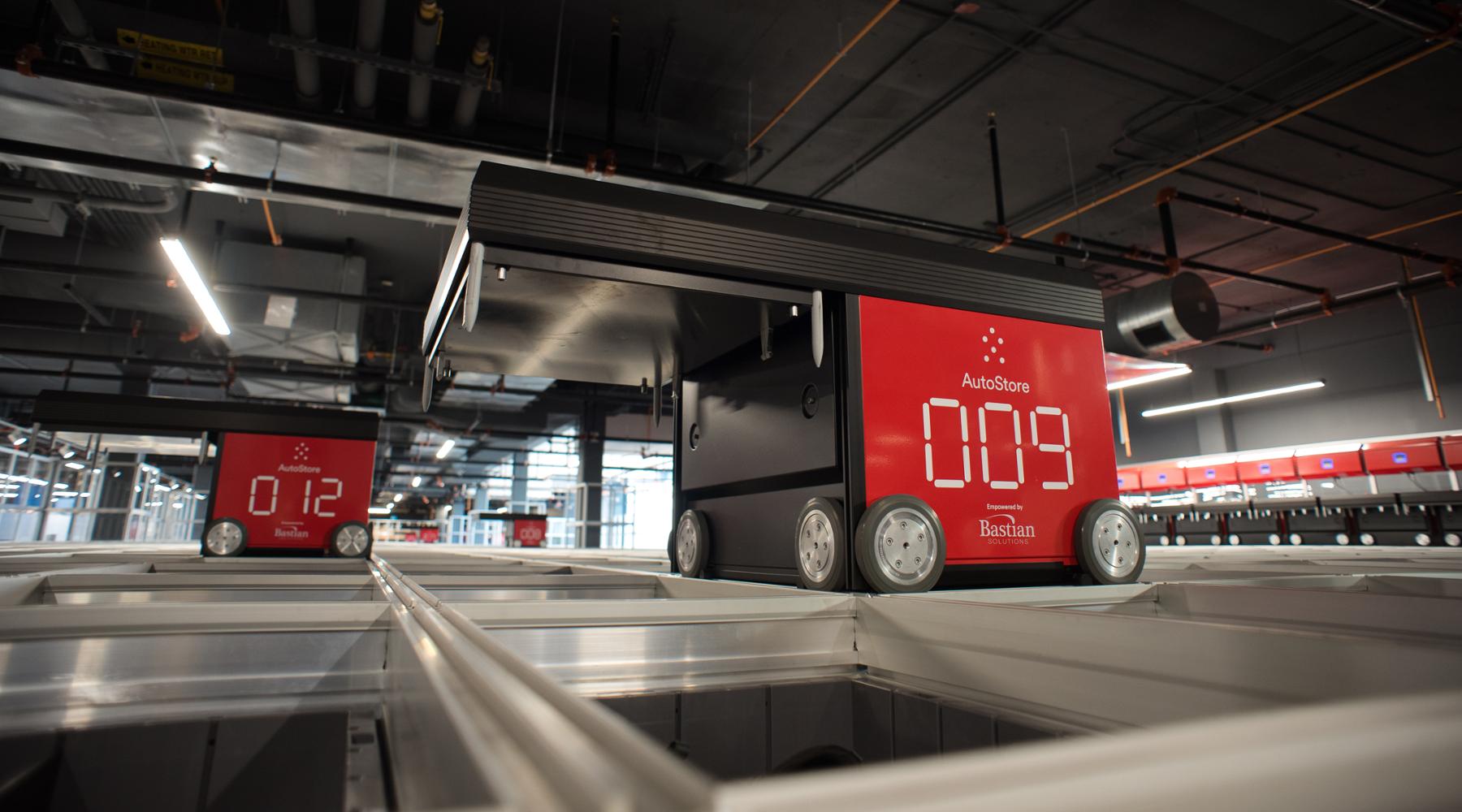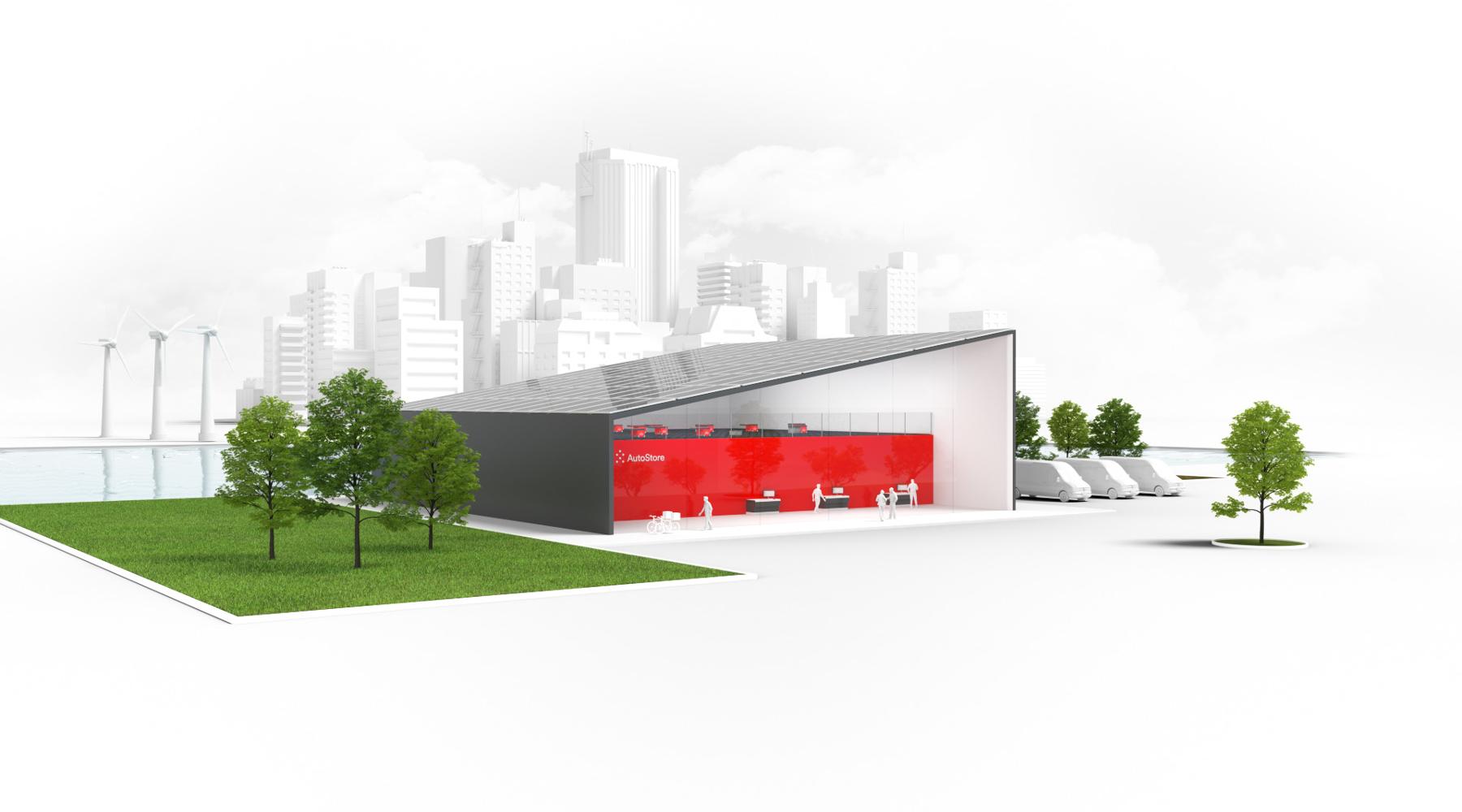Ways to Increase Warehouse Sustainability
Discover 5 steps to enhance warehouse sustainability and reduce environmental impact in logistics & supply chain management.
In the rapidly evolving world of logistics and supply chain management, sustainability has emerged as a key driver of innovation and efficiency. With the increasing awareness of environmental impacts and the growing demand for greener practices, the focus on sustainability in warehouse operations has never been more critical. This article delves into five essential strategies to enhance sustainability in warehousing, drawing from the latest trends and technologies reshaping the industry.
The overarching questions that guide our exploration are: What factors contribute to sustainable warehouse logistics? How can automation serve as a catalyst for heightened sustainability? And what additional positive impacts can be unlocked through the adoption of more sustainable logistics practices?
The concept of “warehouse sustainability”
Sustainable warehouse logistics is an evolving field that focuses on optimizing operational efficiency while minimizing environmental impact across several key areas, from energy management and waste reduction to green building design and innovative transportation strategies. In other words, the concept of warehouse sustainability is wide-ranging and covers the following areas:
- Energy management: This area examines how a warehouse uses energy, including sources of energy (like renewable vs. non-renewable), energy consumption patterns, and energy efficiency measures.
- Waste and resource use: This involves assessing how the warehouse manages waste (like recycling and disposal practices) and how efficiently it uses resources (such as materials, water, and packaging).
- Building and infrastructure: This includes the design and materials of the warehouse itself, such as the use of sustainable building materials, insulation, natural lighting, and overall environmental impact of the infrastructure.
- Transportation and logistics: This area looks at how goods are transported to and from the warehouse, focusing on fuel efficiency, vehicle emissions, and the optimization of logistics to reduce environmental impact.
- Operational practices and processes: This encompasses the internal processes and practices within the warehouse, like inventory management, shipping and receiving procedures, and the use of automation and technology for efficiency.
- Employee well-being and safety: This involves evaluating the working conditions and practices in place to ensure employee health and safety, which can include air quality, ergonomics, and overall workplace environment.
- Regulatory compliance and standards: This area assesses adherence to environmental laws, regulations, and standards, ensuring the warehouse meets legal and ethical requirements.
- Sustainability initiatives and innovation: This looks at any special initiatives or innovative practices the warehouse employs to further sustainability goals, like renewable energy projects, sustainability certifications, or community engagement.
Having gained insight into the various facets of warehouse sustainability, it's now essential to assess your own warehouse's sustainability status. This assessment is an important step in the process of identifying and implementing improvements.

Assessing your warehouse's sustainability
Before enhancing your warehouse's sustainability, it's crucial to evaluate your current environmental impact. This assessment will help you identify areas for improvement and establish a baseline for future progress. Here's a concise guide on how to assess your warehouse's sustainability:
Energy usage analysis: Review energy bills and track electricity and gas consumption to pinpoint usage patterns. Consider an energy audit for precise insights. Look for opportunities to reduce energy consumption through efficient lighting, HVAC systems, and machinery.
Waste management assessment: Evaluate waste generation and disposal practices within your warehouse. Identify ways to reduce waste through improved inventory management and recycling programs. Encourage employees to minimize waste and recycle materials.
Water consumption review: Analyze water usage in restrooms, cooling systems, and cleaning processes. Implement water-saving technologies like low-flow fixtures. Explore rainwater harvesting or greywater recycling systems.
Transportation efficiency check: Examine transportation practices and fleet emissions. Optimize routes, reduce idling times, and consider eco-friendly vehicle options. Collaborate with suppliers to cut transportation-related emissions.
Employee engagement and training: Assess employee awareness of sustainability goals. Conduct training programs to educate and involve employees in sustainability initiatives. Encourage their active participation and feedback.
Regulatory compliance and certifications: Ensure compliance with environmental regulations. Explore certifications like LEED or ISO 14001 to align with sustainability goals and industry standards.
By following this assessment, you can gain a comprehensive understanding of your warehouse's current sustainability position, empowering you to effectively enact positive changes. In the following section, we will delve into the specific steps for implementing these improvements.
{{cta1}}
5 steps towards a more sustainable warehouse
Let's explore the five key steps that can guide your business and warehouse towards a sustainable transformation:
Step 1: Optimizing space utilization
Effective space management is at the heart of sustainable warehousing. Annually, new construction activities contribute approximately 3,729 million metric tons of CO2 to the earth’s atmosphere, and by maximizing the use of existing structures, businesses can significantly reduce their environmental footprint. This involves creatively rethinking storage solutions to accommodate more inventory in less space, thereby minimizing land use and associated carbon emissions.
Innovations such as AutoStore’s ultradense cube storage has proven highly effective in achieving these goals, offering flexibility and scalability to adapt to changing needs.
AutoStore is the world’s densest automated storage and retrieval system, allowing up to four times the capacity of manual warehouses. This approach minimizes the need for moving operations to large physical spaces, leading to significant cost savings in commercial real estate and energy consumption.

Step 2: Optimizing energy consumption
Energy management is a critical aspect of sustainable warehousing. Implementing energy-efficient lighting and HVAC systems can dramatically reduce power consumption. Additionally, integrating renewable energy sources, such as solar panels, contributes to a reduced carbon footprint. Smart sensors and IoT (Internet of Things) technology play a pivotal role in monitoring and optimizing energy usage, ensuring that warehouses operate at peak efficiency with minimal environmental impact.
AutoStore's innovative approach aligns seamlessly with energy management strategies, making a significant contribution to sustainable warehousing. AutoStore's Robots are engineered to operate with minimal energy consumption, reducing overall power usage in the warehouse. Since robots are doing all the storage and retrieval work, lights can be turned off, and temperatures can be significantly lower in the warehouse. Moreover, 10 AutoStore Robots combined consume only the same amount of electricity as one vacuum cleaner while operating. This is particularly impactful considering the energy-intensive nature of traditional warehousing operations.
By leveraging IoT, AutoStore systems can provide real-time data on energy consumption, allowing for immediate adjustments to reduce waste and improve efficiency.
Additionally, AutoStore systems can be easily integrated into warehouses that utilize renewable energy sources, such as solar panels. For instance, the Swiss e-commerce provider BRACK.CH has fully solar-powered their AutoStore, exemplifying this integration. This integration can further reduce the carbon footprint of warehousing operations. By combining energy-efficient operations, smart technology integration, and compatibility with renewable energy, AutoStore plays a vital role in promoting energy sustainability in the warehousing sector.
In the video above, Roland Brack, Founder of BRACK.CH talks about the benefits of installing AutoStore, including energy reduction and increased sustainability.
Step 3: Sustainable picking strategies
The accuracy of the picking process is vital for reducing waste and emissions. Advanced technologies like AutoStore, automated guided vehicles (AGVs) and wearable tech can streamline picking operations, significantly reducing errors and the need for return shipments. This not only boosts operational efficiency but also aligns with broader environmental goals by minimizing the carbon footprint associated with transportation.
{{cta2}}
Step 4: Sustainable temporal strategies
Incorporating flexibility and resilience into warehouse operations ensures long-term sustainability. This involves investing in systems and technologies that are built to last and can adapt to evolving market demands. Such an approach reduces waste and ensures that investments remain economically viable over extended periods. Emphasizing durability and adaptability in equipment and infrastructure choices is key to achieving these objectives.
Watch the video above to see Jeroen Dekker, the founder of 3PL Provider Active Ants, explain how integrating AutoStore into their operations has significantly contributed to achieving their sustainability goals.
AutoStore and sustainability
Being at the forefront of sustainable supply chain innovation, AutoStore has received several awards such as the 2019 Green Supply Chain Award from SDCExec. This is a testament to our unwavering commitment to eco-friendly practices, showcasing our ability to dramatically reduce energy costs and promote solar-powered operations.
The Energy-efficient automated storage and retrieval system developed by AutoStore significantly reduces energy use, helping to lower the carbon footprint of warehousing operations. Some of our customers have seen a 75% reduction in their power expenses while others run their AutoStore system on solar energy.
By optimizing space utilization, we reduce the need for large buildings, minimizing environmental impacts. We also prioritize durability in our systems, supporting a circular economy. Ethical business practices are at the core of our operations, including strict adherence to human rights and fair labor standards. These initiatives reflect our dedication to environmental responsibility and ethical conduct in the industry. For more details, visit our sustainability page here.

Conclusion
The five strategies outlined in this article underscore the multifaceted approach required to enhance sustainability in warehousing. From optimizing space and empowering employees to managing energy and refining picking processes, each element contributes significantly to building a more sustainable, efficient, and responsible logistics environment. As the industry continues to evolve, these practices will undoubtedly play a crucial role in shaping the future of sustainable warehousing.
FAQ
What factors influence sustainable warehouse logistics?
The pursuit of sustainable warehouse logistics is influenced by a range of factors, each playing a crucial role in how efficiently and responsibly a warehouse operates. Key elements include spatial considerations, energy consumption, employee well-being, order accuracy, and the longevity of technology. Effective management of space not only maximizes efficiency but also reduces the environmental impact. Energy consumption is a major factor, with more sustainable practices leading to reduced carbon footprints. Prioritizing employee well-being leads to a healthier, more productive workforce, while accuracy in order processing minimizes waste and maximizes customer satisfaction. Lastly, the choice and maintenance of technology, especially those that stand the test of time, play a pivotal role in sustainable logistics.
How can automation contribute to sustainability in warehouse logistics?
Automation stands as a cornerstone in the push for sustainability in warehouse logistics. By optimizing space and reducing energy consumption, automated systems greatly enhance operational efficiency. They also contribute to employee satisfaction by taking over repetitive and physically demanding tasks, reducing the risk of injuries and improving job quality. Additionally, automation leads to a significant increase in order accuracy, minimizing waste and increasing customer satisfaction. The integration of automated systems into warehouse operations is a key strategy for achieving long-term sustainability, ensuring that operations are not only efficient but also environmentally and socially responsible.
What positive effects can be achieved through more sustainable logistics?
Adopting more sustainable practices in logistics brings a multitude of positive effects. These include enhanced resource efficiency, which leads to reduced operational costs and a lower environmental footprint. Sustainable logistics practices also contribute to a significant reduction in waste and emissions, helping to protect the environment. Employee well-being is improved through safer and more ergonomic working conditions. Additionally, greater order accuracy and efficient use of technology enhance customer satisfaction and contribute to the longevity and resilience of the logistics operation.
Which challenges do businesses face in their warehouse logistics, and how can sustainability address them?
Businesses operating in warehouse logistics often grapple with challenges like spatial limitations, high energy consumption, and the need for accurate order processing. Sustainable practices offer viable solutions to these challenges. For instance, optimizing space usage and implementing energy-efficient systems can substantially reduce operational costs and environmental impact. Automation and other sustainable technologies can enhance order accuracy and processing efficiency, addressing the critical need for reliability in logistics operations.
How can companies make their warehouse logistics more sustainable for the future?
For companies aspiring to make their warehouse logistics more sustainable, a strategic approach is key. This involves considering space optimization to ensure efficient use of resources, adopting energy-efficient practices to reduce consumption and emissions, and focusing on employee engagement to create a productive and healthy work environment. Enhancing order accuracy through reliable systems and maintaining a focus on the longevity of technology are also crucial steps. This comprehensive approach provides a roadmap for companies to follow, ensuring that their logistics operations are not only efficient and cost-effective but also environmentally and socially responsible.



















.jpeg)



